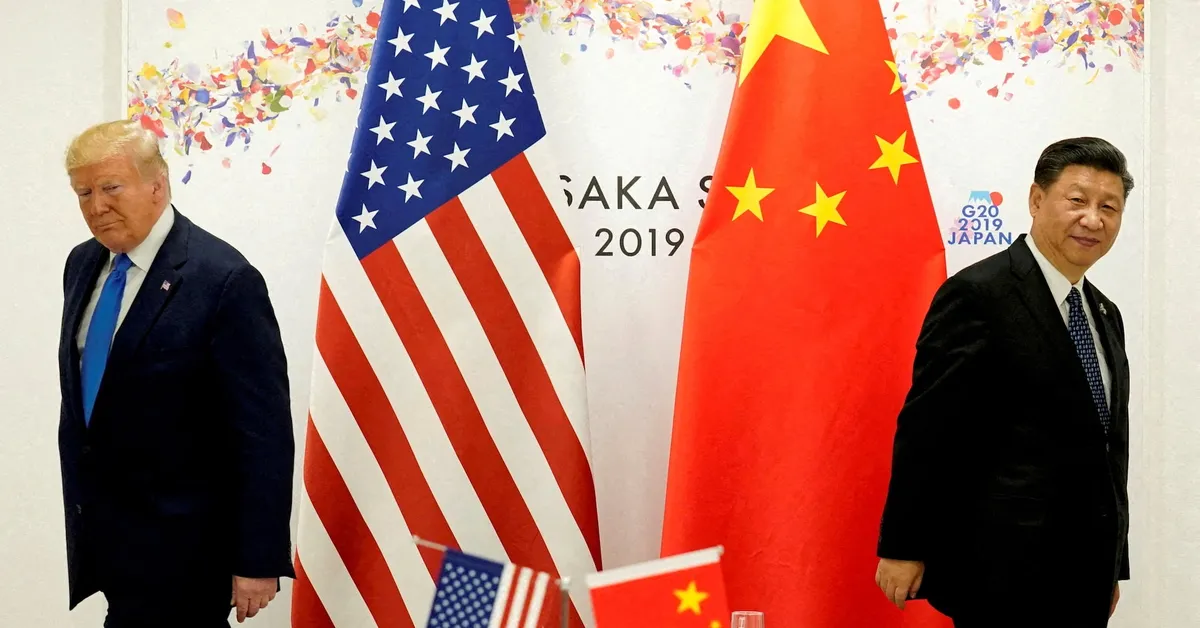
In a significant escalation of diplomatic and economic tensions, China has placed civilian government officials in Beijing on a “wartime footing” as it embarks on a diplomatic charm offensive. This strategy aims to galvanize support from other nations to counter the U.S. President Donald Trump’s tariffs, according to multiple sources familiar with the situation.
Leading this initiative, Communist Party propaganda officials have been instrumental in shaping China's narrative. Government spokespeople have been actively sharing defiant messages on social media, including a notable clip featuring former leader Mao Zedong, who famously stated, “we will never yield.” This messaging aims to reinforce a sense of resilience among the Chinese populace and rally international support against perceived American aggression.
As part of this wartime posture, officials from the foreign affairs and commerce ministries have been instructed to cancel vacation plans and remain reachable at all times. This heightened state of alert reflects Beijing's serious commitment to responding to U.S. tariff policies, with departments focused on U.S. relations receiving additional resources, including personnel who previously managed China's response during Trump's first term.
The shift from a cautious approach to a more combative stance marks a pivotal change for Beijing, which had previously sought to avoid an escalating trade war. For months, Chinese diplomats attempted to establish a constructive communication channel with Trump’s administration, advocating for what they described as a “win-win” trading relationship.
In a strategic pivot, China has transitioned from seeking a negotiated settlement to implementing retaliatory tariffs and adopting a more defiant approach. This assessment of China's response strategy is based on insights gathered from a range of U.S. and Chinese officials, diplomats, and scholars familiar with the ongoing bilateral exchanges. Reports indicate that Beijing's diplomats are actively reaching out to other nations targeted by Trump's tariffs, seeking to foster cooperative relationships.
China's outreach has included contacting longstanding U.S. allies in Europe, Japan, and South Korea, as part of its efforts to counteract the effects of U.S. tariffs. Notably, a spokesperson from China's embassy in Washington commented that Beijing does not seek to engage in trade wars but is not intimidated by them.
In reaction to China's initial retaliation, President Trump remarked that China had miscalculated the situation, suggesting they had panicked. He expressed his belief that China desired a deal but lacked the comprehension of how to proceed effectively. U.S. officials have attributed the current impasse to China's substantial trade surplus, which they argue results from practices that have not been adequately addressed through years of negotiations.
Following Trump’s imposition of massive tariffs intended to prevent exploitation of U.S. interests, Chinese leader Xi Jinping adopted a more assertive public stance, questioning the American public's capacity to endure hardship compared to the Chinese citizens. The tariffs, dubbed “Liberation Day” levies, have created a significant freeze in trade relations, particularly impacting the flow of goods and services between the two nations.
Despite a polite start to relations post-Trump’s election, the diplomatic landscape has soured significantly. Initial high-level communications have waned, with no equivalent channels established in the current administration. Reports suggest that U.S. officials are eager to maintain working-level contact but are unwilling to engage in discussions that do not advance American interests.
Chinese Foreign Minister Wang Yi has faced challenges in securing meetings with U.S. counterparts, highlighting a stark contrast to previous communications with the Trump administration. The absence of a clear diplomatic channel has complicated efforts to resolve ongoing trade disputes, with both sides engaging in what many analysts describe as a stalemate.
China's response to the latest U.S. tariffs reflects lessons learned from previous trade confrontations. Drawing from experiences during Trump’s first term, China has developed a comprehensive retaliatory strategy that includes imposing tariffs and restricting operations for U.S. companies. This calculated approach underscores Beijing's commitment to countering U.S. trade policies while safeguarding its economic interests.
While engaging in international diplomacy, China is also focusing on domestic reactions to U.S. tariffs. Social media platforms have been flooded with messages advocating for calm and resilience, while government officials emphasize the importance of domestic consumption over reliance on exports. This shift in economic strategy is particularly pertinent as China grapples with challenges stemming from the real estate sector.
As tensions between China and the U.S. escalate, the current landscape reflects a complex interplay of diplomatic maneuvers and economic strategies. The Chinese government's emphasis on a unified response against U.S. tariffs, coupled with its focus on domestic economic stability, highlights the multifaceted nature of the ongoing trade conflict. With both sides unwilling to relent, the path ahead remains fraught with challenges and uncertainties.